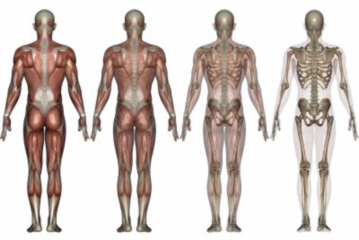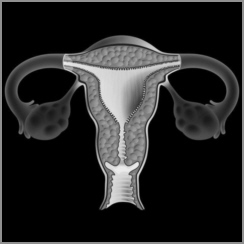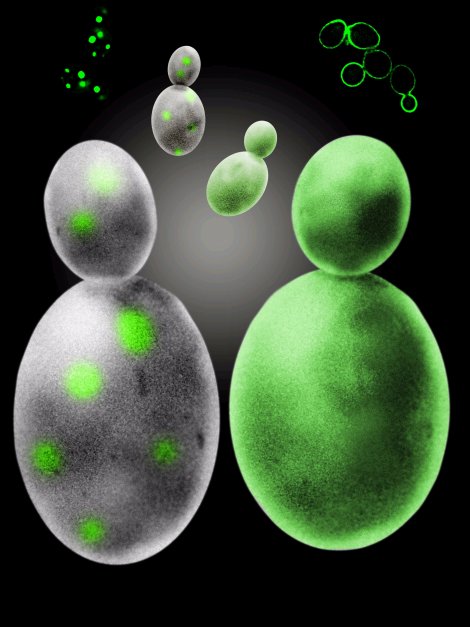WELCOME TO OUR PARKINSON'S PLACE!
I HAVE PARKINSON'S DISEASES AND THOUGHT IT WOULD BE NICE TO HAVE A PLACE WHERE THE CONTENTS OF UPDATED NEWS IS FOUND IN ONE PLACE. THAT IS WHY I BEGAN THIS BLOG.
I COPY NEWS ARTICLES PERTAINING TO RESEARCH, NEWS AND INFORMATION FOR PARKINSON'S DISEASE, DEMENTIA, THE BRAIN, DEPRESSION AND PARKINSON'S WITH DYSTONIA. I ALSO POST ABOUT FUNDRAISING FOR PARKINSON'S DISEASE AND EVENTS. I TRY TO BE UP-TO-DATE AS POSSIBLE.
I AM NOT RESPONSIBLE FOR IT'S CONTENTS. I AM JUST A COPIER OF INFORMATION SEARCHED ON THE COMPUTER. PLEASE UNDERSTAND THE COPIES ARE JUST THAT, COPIES AND AT TIMES, I AM UNABLE TO ENLARGE THE WORDING OR KEEP IT UNIFORMED AS I WISH. IT IS IMPORTANT TO UNDERSTAND I AM A PERSON WITH PARKINSON'S DISEASE. I HAVE NO MEDICAL EDUCATION,
I JUST WANT TO SHARE WITH YOU WHAT I READ ON THE INTERNET. IT IS UP TO YOU TO DECIDE WHETHER TO READ IT AND TALK IT OVER WITH YOUR DOCTOR. I AM JUST THE COPIER OF DOCUMENTS FROM THE COMPUTER. I DO NOT HAVE PROOF OF FACT OR FICTION OF THE ARTICLE. I ALSO TRY TO PLACE A LINK AT THE BOTTOM OF EACH ARTICLE TO SHOW WHERE I RECEIVED THE INFORMATION SO THAT YOU MAY WANT TO VISIT THEIR SITE.
THIS IS FOR YOU TO READ AND TO ALWAYS KEEP AN OPEN MIND.
PLEASE DISCUSS THIS WITH YOUR DOCTOR, SHOULD YOU HAVE ANY QUESTIONS, OR CONCERNS. NEVER DO ANYTHING WITHOUT TALKING TO YOUR DOCTOR FIRST..
I DO NOT MAKE ANY MONEY FROM THIS WEBSITE. I VOLUNTEER MY TIME TO HELP ALL OF US TO BE INFORMED.
I WILL NOT ACCEPT ANY ADVERTISEMENT OR HEALING POWERS, HEALING FROM HERBS AND ETC. UNLESS IT HAS GONE THROUGH TRIALS AND APPROVED BY FDA. IT WILL GO INTO SPAM.
THIS IS A FREE SITE FOR ALL WITH NO ADVERTISEMENTS
THANK YOU FOR VISITING! TOGETHER WE CAN MAKE A DIFFERENCE!
TRANSLATE
Wednesday, January 15, 2014
The DDT Story
Sunday, January 12, 2014
THE PREVALENCE OF MUSCULOSKELETAL PROBLEMS IN PARKINSON'S DISEASE
Parkinsonism Related Disorders [2013] 19 (7) : 666-669 (Y.E.Kim, W.W.Lee, J.Y.Yun, H.J.Yang, H.J.Kim, B.S. Jeon)
The prevalence of musculoskeletal problems was found to be significantly higher Parkinson's Disease. Around two thirds of people with Parkinson's Disease have them. Only just over a quarter of people with Parkinson's Disease answered that their musculoskeletal problems were recovering. Musculoskeletal problems also tended to receive less treatment when people had Parkinson's Disease.
 Common sites of musculoskeletal problems were the lower back, shoulder and knee in that order. The lower back was the site of musculoskeletal problems in nearly half of people with Parkinson's Disease. The shoulder and knee were affected far less often. Among the past diagnoses associated with musculoskeletal problems, frozen shoulder, low back pain, osteoporosis and fracture were more common in people with Parkinson's Disease. Older age, being female, and having a higher score on the Unified Parkinson's Disease Rating Scale were associated with more musculoskeletal problems.
Common sites of musculoskeletal problems were the lower back, shoulder and knee in that order. The lower back was the site of musculoskeletal problems in nearly half of people with Parkinson's Disease. The shoulder and knee were affected far less often. Among the past diagnoses associated with musculoskeletal problems, frozen shoulder, low back pain, osteoporosis and fracture were more common in people with Parkinson's Disease. Older age, being female, and having a higher score on the Unified Parkinson's Disease Rating Scale were associated with more musculoskeletal problems.
L-DOPA PRODRUG FOR PARKINSON'S DISEASE
Movement Disorders [2013] Dec 13 [Epub ahead of print (P.A.Lewitt, F.J.Huff, R.A.Hauser, D.Chen, D.Lissin, K.Zomorodi, K.C.Cundy)
 XP21279 is a new L-dopa prodrug being developed by Xenoport for the treatment of Parkinson's Disease. It uses naturally occurring, high capacity nutrient transporters in the gastrointestinal tract to generate active and efficient absorption into the body.
XP21279 is a new L-dopa prodrug being developed by Xenoport for the treatment of Parkinson's Disease. It uses naturally occurring, high capacity nutrient transporters in the gastrointestinal tract to generate active and efficient absorption into the body.XP21279-carbidopa sustained-release bilayer tablets were developed to provide more continuous exposure to L-dopa. Once absorbed, XP21279 is rapidly converted into L-dopa. In a clinical trial of XP21279, people with Parkinson's Disease were given either XP21279 with carbidopa, or L-dopa with carbidopa, which as Sinemet is the most common means of treating Parkinson's Disease.
The average daily off time was reduced more when using XP21279 but only by 18 minutes. There was little difference between the two in their effect on dyskinesia. However, XP21279 significantly reduced the variability of L-dopa concentration that occurs when using Sinemet (L-dopa and carbidopa). This was achieved by taking XP21279 only three times per day, instead of the four to five times a day that the L-dopa with carbidopa was taken. Therefore, overall, although L-dopa and carbidopa as Sinemet is the most common means of treating Parkinson's Disease, XP21279 was found to be more advantageous.
FEMALE REPRODUCTIVE FACTORS AND THE RISK OF PARKINSON'S DISEASE
SON'S DISEASE
Movement Disorders [2013] Dec 18 [Epub ahead of print] (R.Liu, D.Baird, Y.Park, N.D.Freedman, X.Huang, A.Hollenbeck, A.Blair, H.Chen)
In the largest ever study of its kind, researchers examined female reproductive factors and the risk of Parkinson's Disease. The study involved nearly 120,000 postmenopausal women aged 50 to 71 years. The risk of developing Parkinson's Disease was not significantly associated with female reproductive factors including age at first menstruation, age at first live birth, and age at menopause generally.
 However, there was a tendency for an increased risk of Parkinson's Disease in those women who reached menopause when they were 55 or older. Current hormone users for less than 5 years showed a higher risk of developing Parkinson's Disease, which was anywhere between 11% more likely to more than twice as likely. However, this association disappeared for current hormone users after 5 years of use. Oral contraceptive use for ten years was associated with a lower risk of Parkinson's Disease, down to 59% of what would otherwise be expected.
However, there was a tendency for an increased risk of Parkinson's Disease in those women who reached menopause when they were 55 or older. Current hormone users for less than 5 years showed a higher risk of developing Parkinson's Disease, which was anywhere between 11% more likely to more than twice as likely. However, this association disappeared for current hormone users after 5 years of use. Oral contraceptive use for ten years was associated with a lower risk of Parkinson's Disease, down to 59% of what would otherwise be expected.
PESTICIDES ON AIRCRAFT AS A CAUSE OF PARKINSON'S DISEASE
Flight attendants who have developed Parkinson's Disease have taken legal action to try to prove that they have developed Parkinson's Disease because of the insecticides that are routinely sprayed inside aircraft.
Those pesticides that are known to cause, or be highly associated with Parkinson's Disease are Dieldrin, Rotenone and Organophosphorus pesticides. The fungicides Maneb and Paraquat are also known causes of Parkinson's Disease. Evidence in support of Permathrin, which is used in aircraft, is presently restricted to three animal studies.
 Dieldrin levels are above normal in brains of people with Parkinson's Disease. Dieldrin was the most frequently detected Organochlorine pesticide in people with Parkinson's Disease thereby suggesting that dieldrin is associated with Parkinson's Disease. Organophosphorus pesticides are significantly associated with Parkinson's Disease. The frequent use of household pesticides containing Organophosphorus chemicals increased the chances of developing Parkinson's Disease by 71%. Exposure can lead to Parkinsonism. Rotenone can cause the neurochemical, neuropathological and behavioural features of Parkinson's disease, including hypokinesia and rigidity.
Dieldrin levels are above normal in brains of people with Parkinson's Disease. Dieldrin was the most frequently detected Organochlorine pesticide in people with Parkinson's Disease thereby suggesting that dieldrin is associated with Parkinson's Disease. Organophosphorus pesticides are significantly associated with Parkinson's Disease. The frequent use of household pesticides containing Organophosphorus chemicals increased the chances of developing Parkinson's Disease by 71%. Exposure can lead to Parkinsonism. Rotenone can cause the neurochemical, neuropathological and behavioural features of Parkinson's disease, including hypokinesia and rigidity.
ANTIBODIES FOR THE TREATMENT OF PARKINSON'S DISEASE
Roche and Prothena are collaborating to co-develop antibodies for the treatment of Parkinson's Disease. Prothena's antibody for the treatment of Parkinson's disease, PRX002, targets alpha-synuclein. PRX002 is currently in preclinical development. It is expected to enter Phase 1 clinical trials in people with Parkinson's Disease in 2014. PRX002 has already been tested in various cellular and animal models of synuclein-related disease.
 Synuclein proteins are found throughout the body. One protein from this family, alpha-synuclein, is found extensively in neurons and characterize several neurodegenerative disorders, including Parkinson's Disease, dementia with Lewy bodies, neurodegeneration with brain iron accumulation type 1, and multiple system atrophy, which collectively are termed synucleinopathies. As part of the agreement, Roche and Prothena will initiate a research collaboration focused on including incorporation of Roche's proprietary Brain Shuttle technology to increase delivery of therapeutic antibodies to the brain.
Synuclein proteins are found throughout the body. One protein from this family, alpha-synuclein, is found extensively in neurons and characterize several neurodegenerative disorders, including Parkinson's Disease, dementia with Lewy bodies, neurodegeneration with brain iron accumulation type 1, and multiple system atrophy, which collectively are termed synucleinopathies. As part of the agreement, Roche and Prothena will initiate a research collaboration focused on including incorporation of Roche's proprietary Brain Shuttle technology to increase delivery of therapeutic antibodies to the brain.
FUNGAL CAUSE OF PARKINSON'S DISEASE
Proceedings of the National Academy of Sciences USA [2013] Nov 11 [Epub ahead of print] (A.A.Inamdar, M.M.Hossain, A.I.Bernstein, G.W.Miller, J.R.Richardson, J.W.Bennett)
Octenol (1-octen-3-ol), which is commonly known as mushroom alcohol,,is produced by several plants and fungi. For information go too Octenol. In Drosophila melanogaster (the common fruit fly) Octenol reduces the levels of dopamine, the substance whose deficiency causes Parkinson's Disease.
 Although it has not yet conclusively been proven to have caused Parkinson's Disease in humans, further experiments in human cells revealed that Octenol interfered with two genes involved in the creation of dopamine - the human plasma membrane dopamine transporter (DAT) and the human VMAT ortholog (VMAT2). This demonstrates that 1-octen-3-ol exerts toxicity via disruption of dopamine homeostasis and so may represent a naturally occurring cause of Parkinsonism. Octenol can often be inhaled by humans after being produced in damp, mouldy or water damaged buildings.
Although it has not yet conclusively been proven to have caused Parkinson's Disease in humans, further experiments in human cells revealed that Octenol interfered with two genes involved in the creation of dopamine - the human plasma membrane dopamine transporter (DAT) and the human VMAT ortholog (VMAT2). This demonstrates that 1-octen-3-ol exerts toxicity via disruption of dopamine homeostasis and so may represent a naturally occurring cause of Parkinsonism. Octenol can often be inhaled by humans after being produced in damp, mouldy or water damaged buildings.

